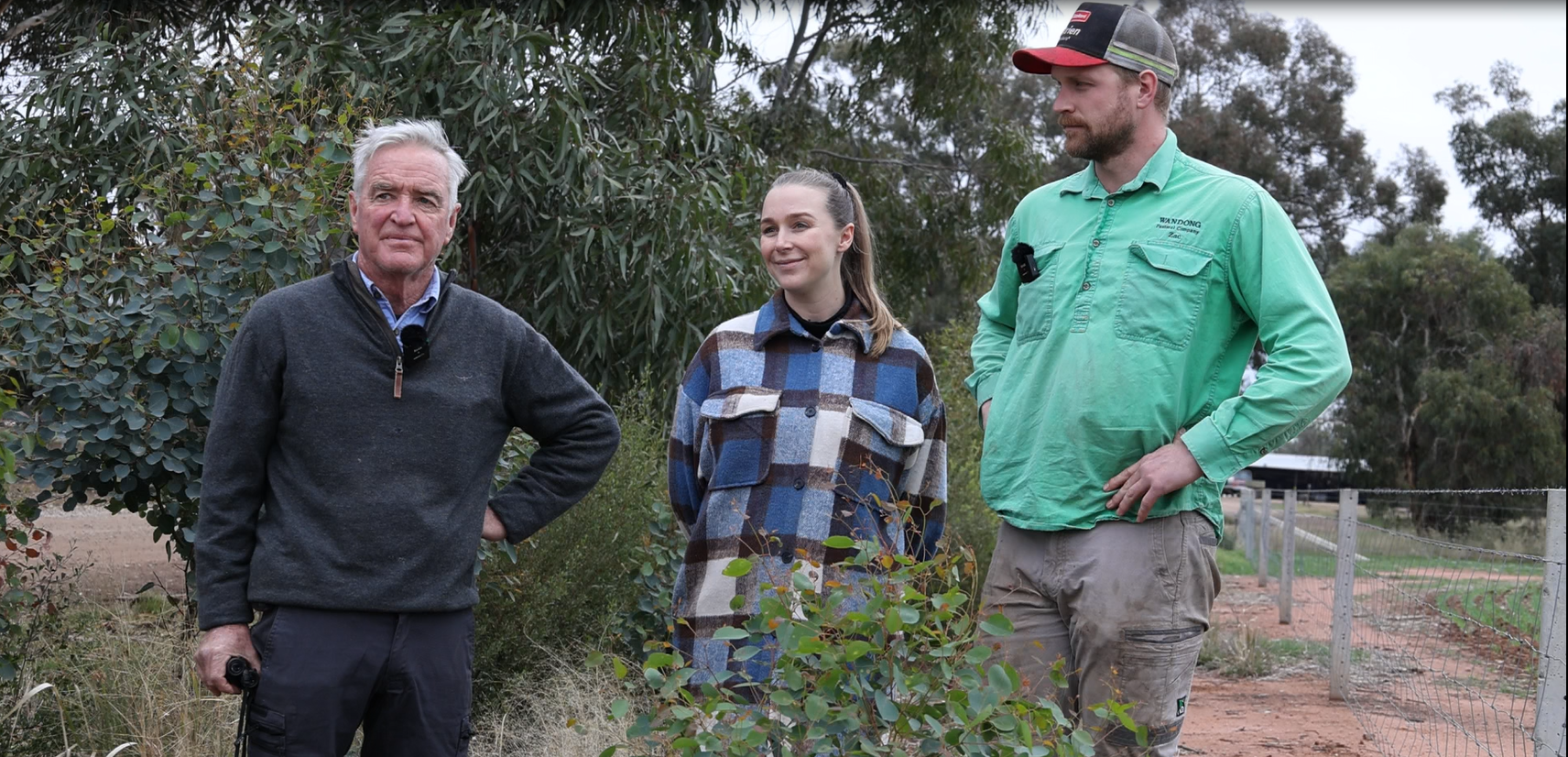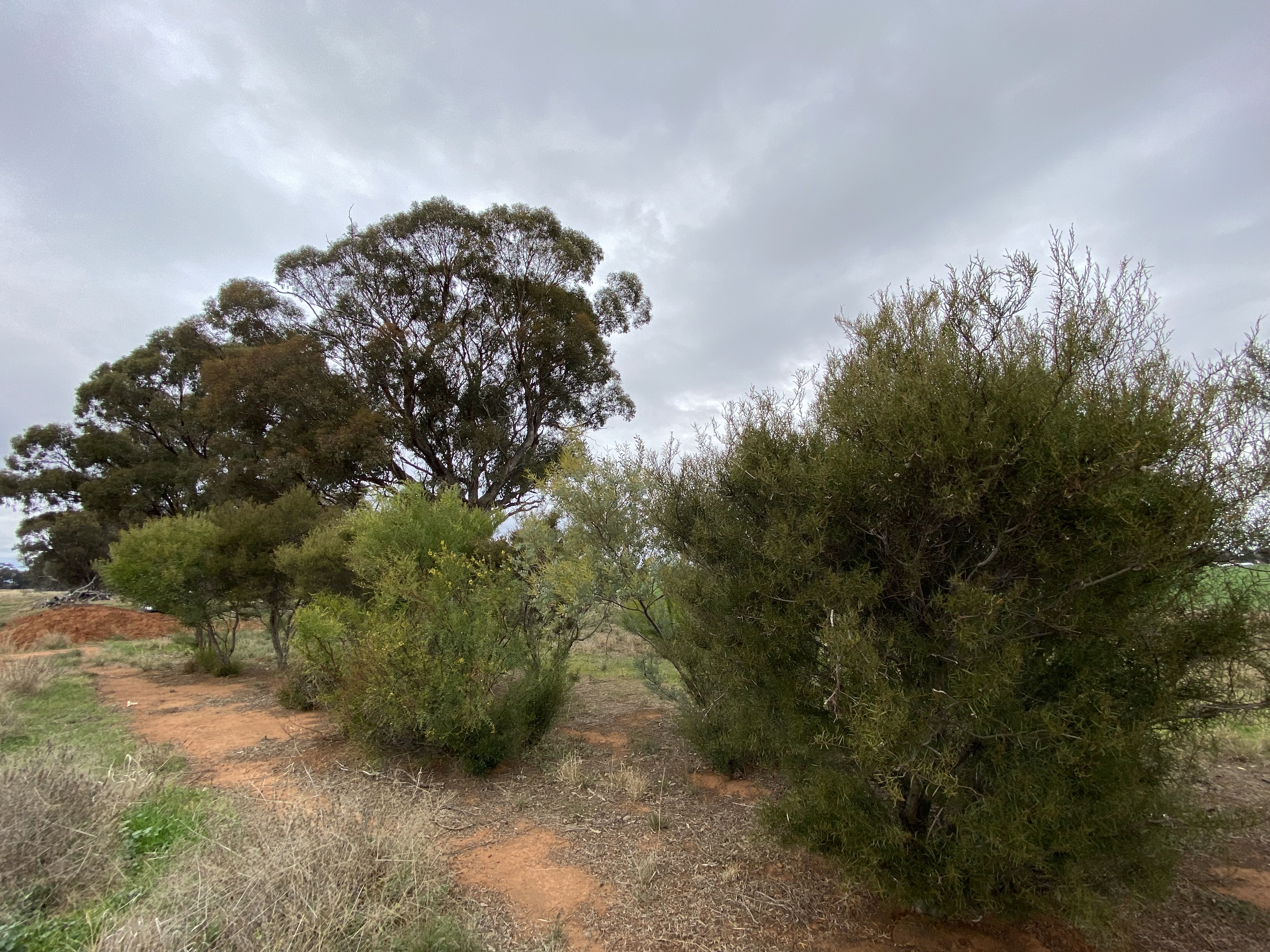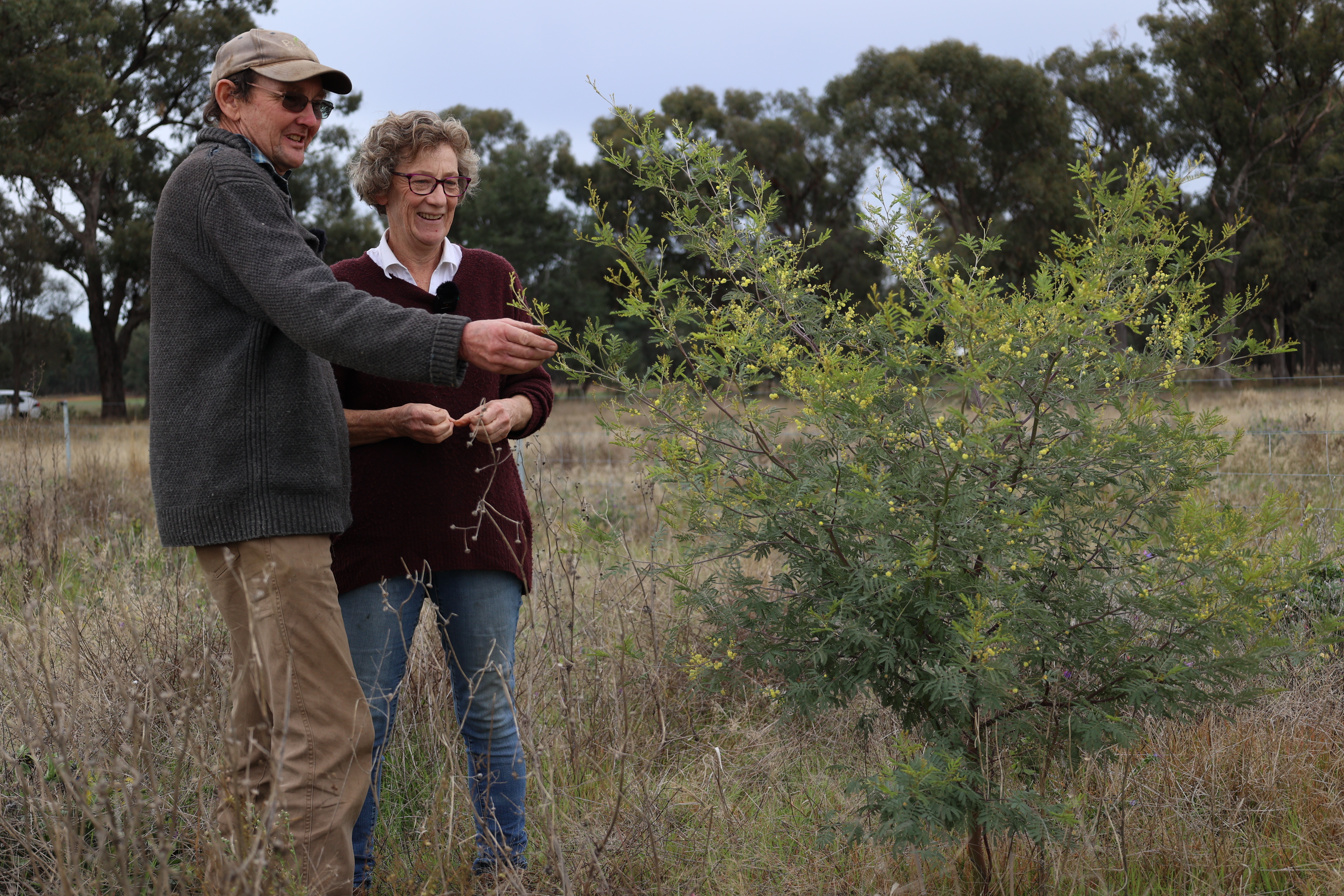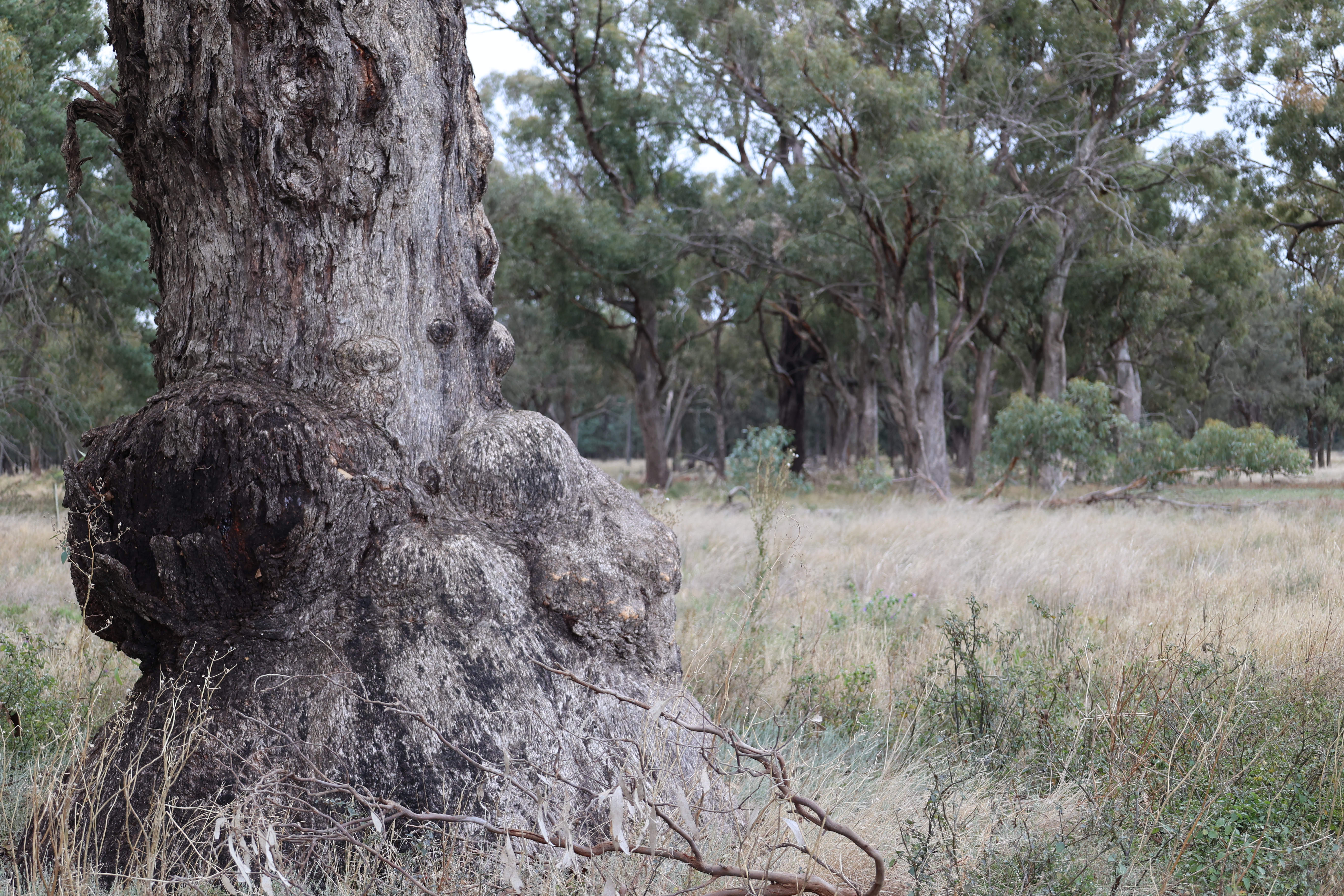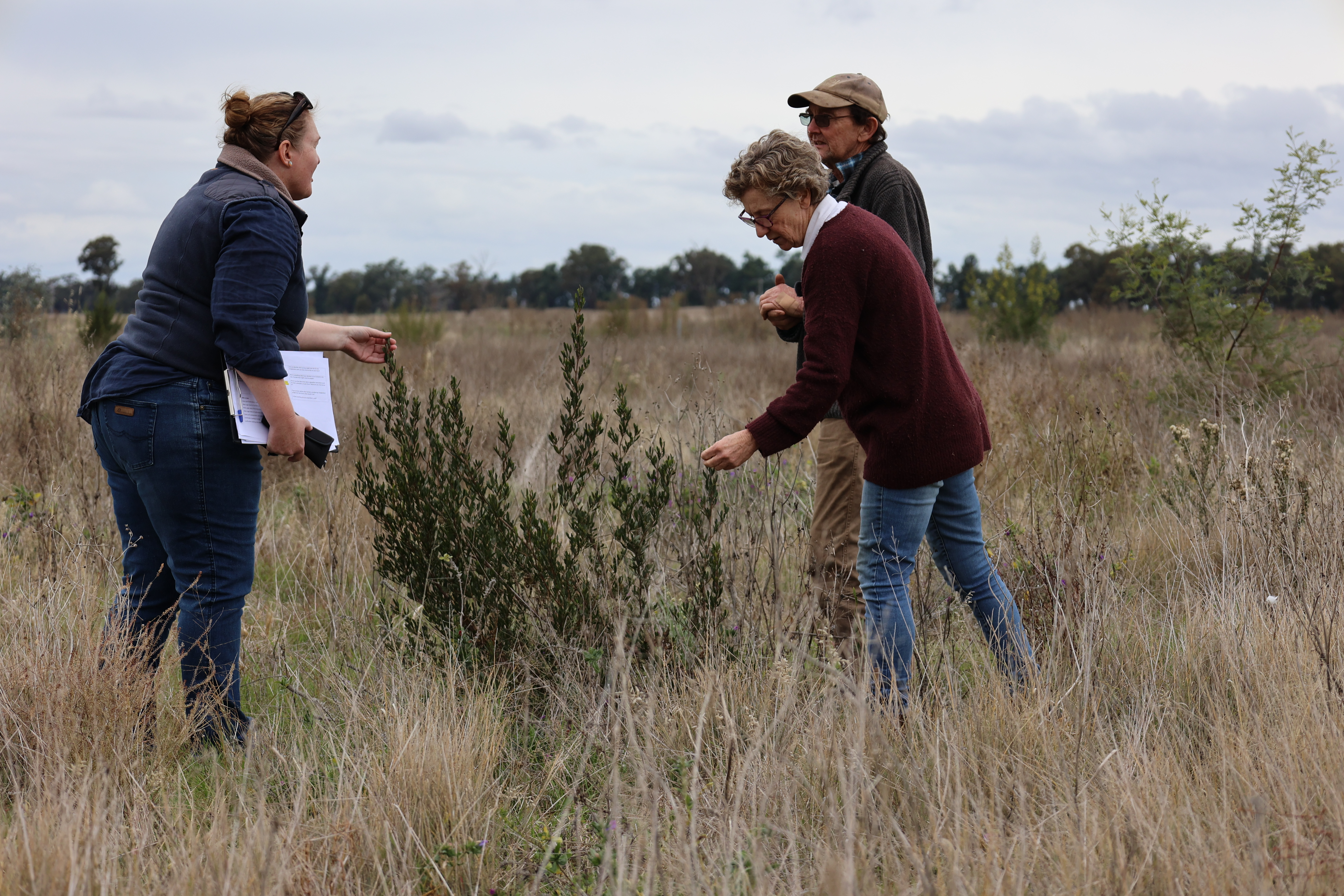Restoring foraging habitat in Wandong and Woodstock
The Restoring Superb Parrot Flyways project set out to restore superb parrot foraging habitat in the Mulwala-Savernake district of the NSW Murray region.
From 2020 to 2023, with funding support from the NSW Environmental Trust, Superb Parrot Project participants have:
- Established 4 conservation agreements
- Completed 5.6 km of fencing
- Planted approximately 50 ha of trees, shrubs and groundcovers for Superb Parrot foraging habitat
- Attended two community workshops (82 attendees)
- Supported the ‘Seedlings for Superbs’ giveaways (60 participants)
‘Wandong’ Savernake NSW
Landholder Hugh Smith, Anne-Maree and Hugh's son Zac.
Hugh said, “It does take a bit of organising and work – particularly if doing it yourself, but now the plants have established, and you see the birds come in, it is really satisfying. It can take a while, but, in the end, it is worth it when it has all come to fruition”.
The work undertaken by the family to support Superb Parrots focused on fencing off a paper lane through the property that connected two roadsides. The roadsides have good-quality remnant vegetation and a high diversity of birds.
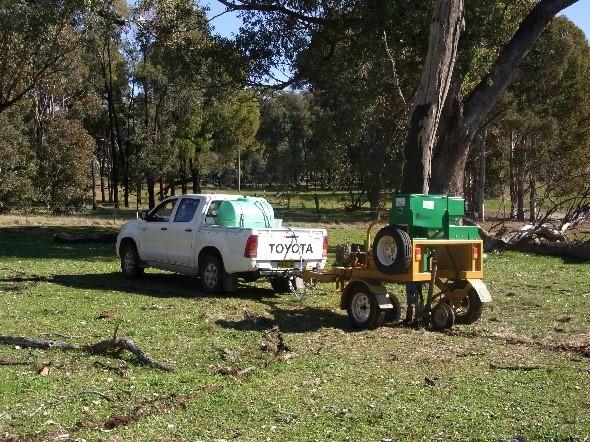
The air seeder in action.
"It’s about doing something else for the farm that doesn’t affect the bottom line". – Hugh and Janette.
After fencing, the sites were direct seeded during the Autumn and early winter. The seeding included a mix of species that Superb Parrots forage. This included local wattles, hopbush ruby saltbush and punty bush.
“We know the parrots are endangered, they don’t nest here, but they do come to forage.”
A ‘Brekky with the Birds’ event was held at the property, where ecologists guided locals on a walk through the adjacent roadsides. This event highlighted the bird diversity existing right next to the property. It encouraged Hugh to create even more areas that could support birds and, at the same time, not obstruct cropping needs. It also helped build bird identification skills, and now Hugh can recognise some species moving into the farm.
“Although we haven’t recently seen a Superb Parrot, we have seen many other small birds. Despite frustrations when establishing these areas during drought, the results now are encouraging. Seeing all the shrubs growing, the increase in birds and animals, it is nice to see and hear the birds we have around”.
Zac said, “Fencing off these areas isn’t taking much area, and it doesn’t really make a difference to the bottom line. What this is doing for the natural environment is worth it.”
Trees planted on Hugh and Janette's property.
Watch the case study video below.
‘Woodstock’ Berrigan NSW
Bob and Jenny Congdon farm 15 km east of Berrigan in southern NSW. Their broad-acre, organic mixed farm has been in the family since Jenny’s grandfather moved to the area in the 1920s. Nestled next to a State Forest, Superb Parrots were regularly seen in the area by both Bob and Jenny and Jenny’s father. In more recent years, there have been fewer sightings of the birds.
Landholders, Bob and Jenny Congdon.
Before being involved in the Superb Parrot project, the Congdon’s had created tree breaks around the property as buffers, a requirement for organic certification. They had also fenced off remnant vegetation and direct seeded into these areas. When natural regeneration comes up, they have also fenced off these plants.
Bob says, “We were motivated to do these projects because we like trees, are keen to increase the biodiversity and keep the wind off the land.”
The Superb Parrot project allowed Bob and Jenny to fulfil a vision of connecting the State Forest to other revegetation they had completed on the property. Jenny said, “It was a bit of work, but it did hold us to a timeline, and the support to get the planting done was a huge time save”.
The project site is 1600 meters long and 30 meters wide. 1,550 trees and shrubs were planted in 5 rows. Bob and Jenny prepared the site by deep ripping before planting. Planting was completed by a contractor in the winter months.
Jenny and Bob are proud of the birds that are now visiting their farm and the natural regeneration of the plants from some of the original plantings.
Bob and Jenny's Congdon farm.
"It was a bit of work, but it did hold us to a timeline, and the support to get the planting done was a huge time saver." – Bob and Jenny.
After attending an event focused on Superb Parrots, Jenny said, “I learnt about the habitat needs for Superb Parrots and what they eat. I also learnt that there is so much mystery about the bird and where they are. I like the idea of recording when you find one; it is so important to share any sightings and learn about how we, as farmers, can help protect a native animal.”
For Bob, a successful revegetation project would mean being able to go out and photograph a Superb Parrot and then find little marsupials such as the Fat-tailed Dunnart (which had been found only a few years ago on the farm).
“The more you know, the more confident you can be about what you are looking at when you find something,” said Bob.
Bob and Jenny’s advice to others is to keep fencing and planting.
“Work to a plan and just do. Don’t feel like it is a lot of work; once it is done, the benefits are worth it. These sorts of projects are good because that bit of financial help can motivate you to get it done and usually much more extensive.”
“Hopefully, this project site creates a wildlife corridor through the whole property that in the future has large trees and shrubs, grasses on the ground and heaps of birds and wildlife moving through it.”
Senior Land Services Officer, Shanna Rogers observing a plant with Bob and Jenny.
Watch the case study video below.
For more information
Contact your nearest Local Land Services office on 1300 795 299 or read more about restoring Superb Parrot flyways.
